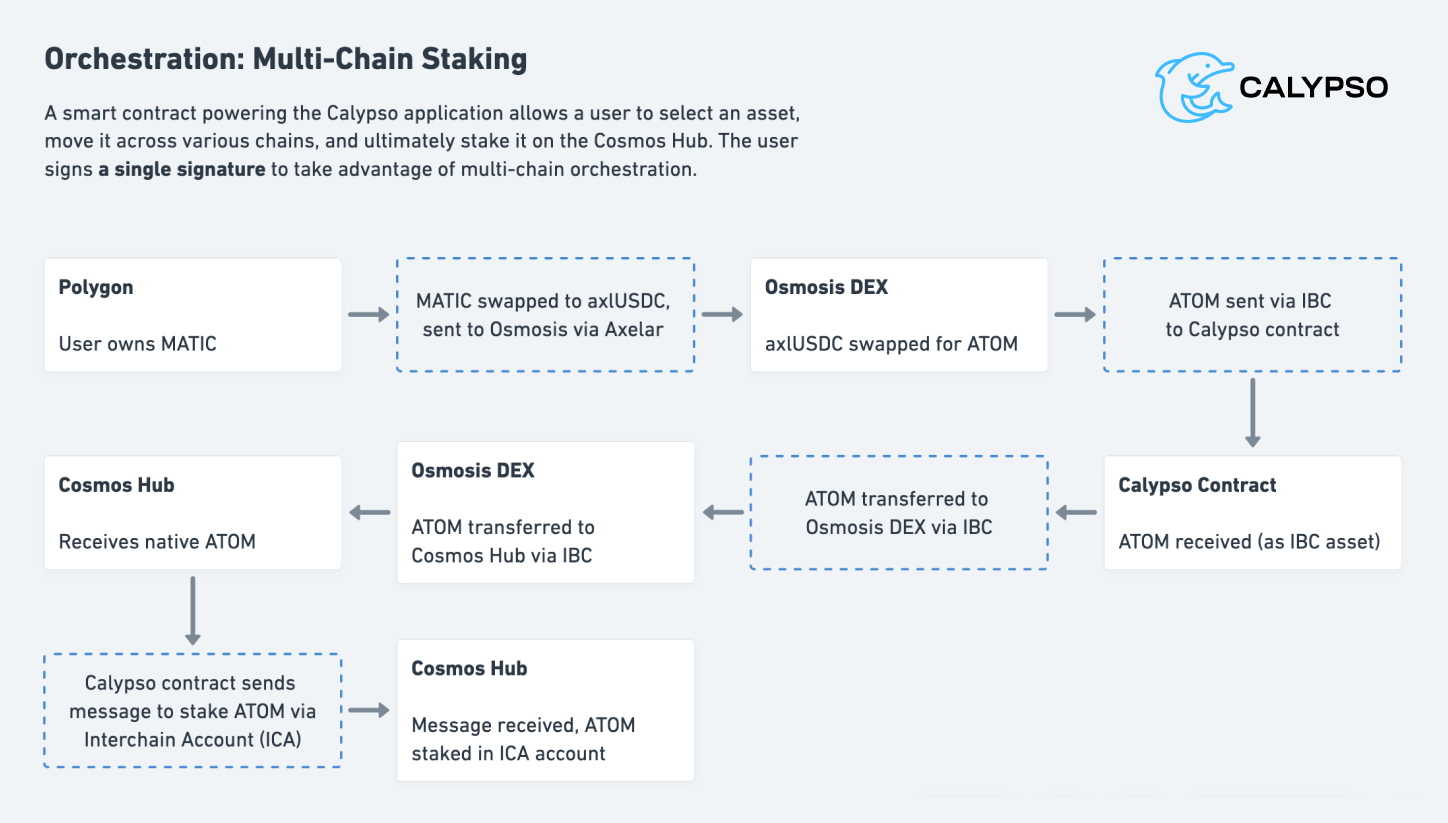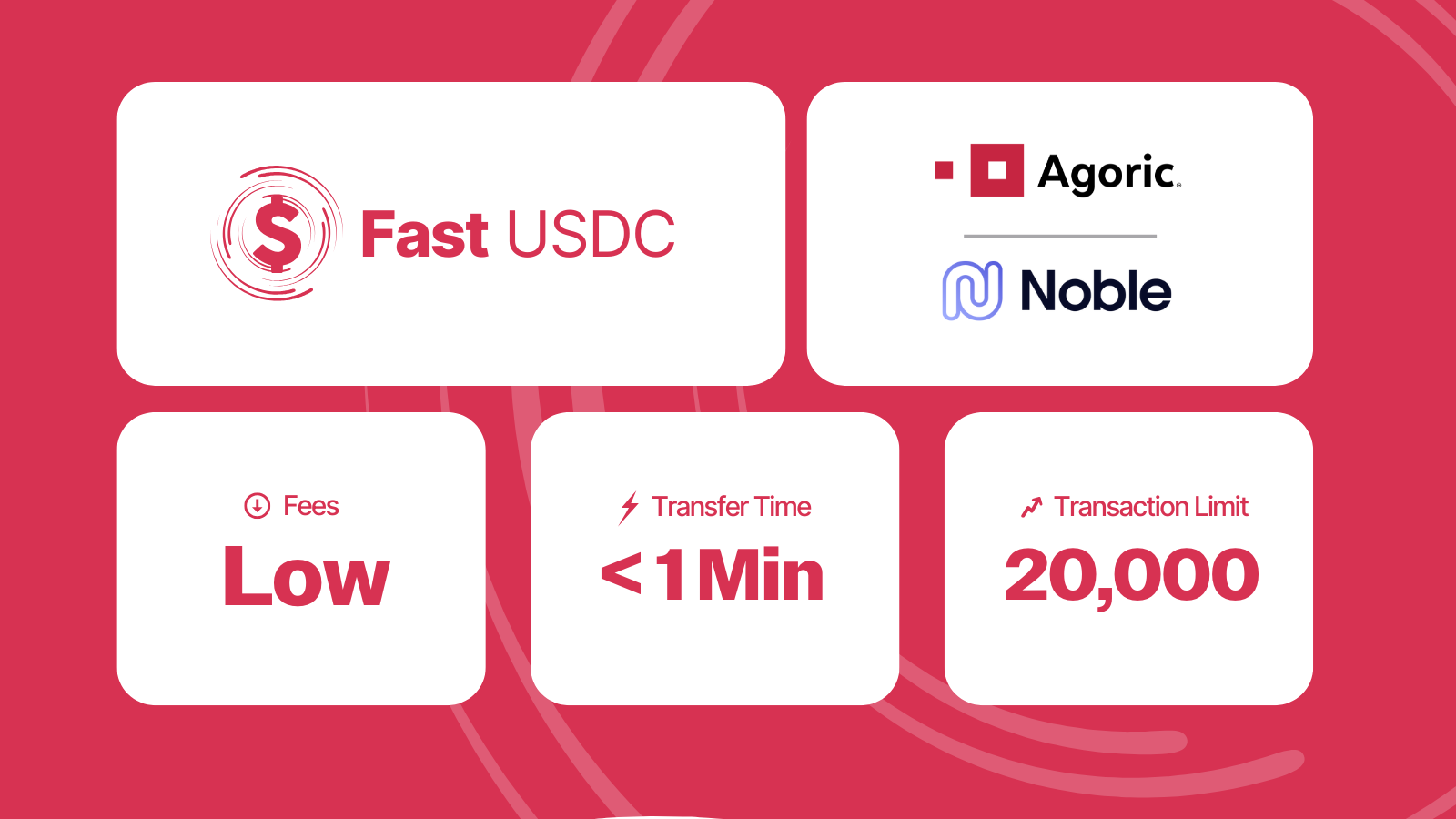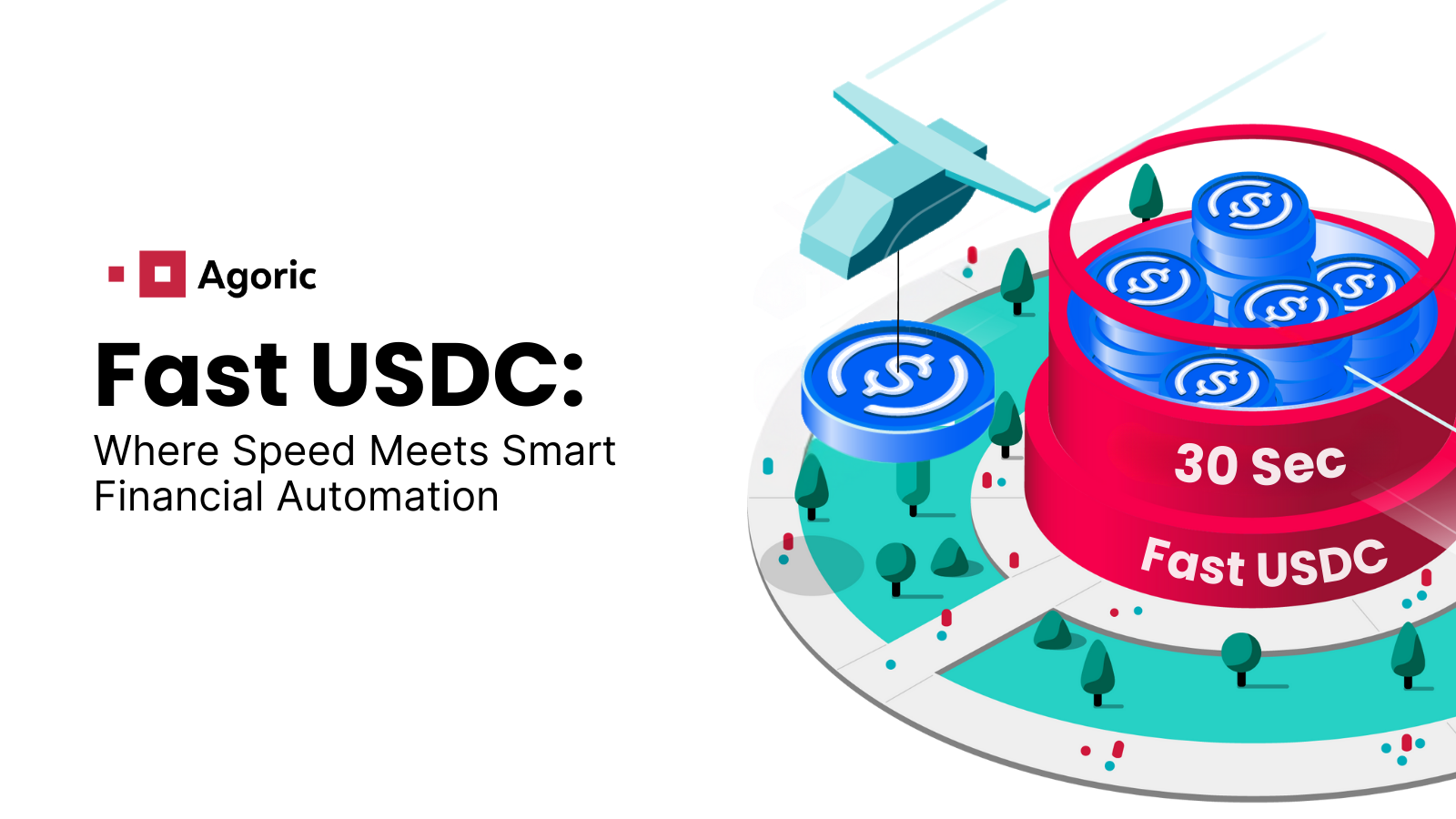Agoric is uniquely designed to reduce the friction in building complex multi-chain applications, and Orchestration is what makes it all possible. Orchestration is the programming power to create unified user experiences in the world of async messaging across disparate blockchains and connection protocols. Teams throughout the crypto industry are working tirelessly on creating seamless multi-chain applications because success here will unite fragmented liquidity, enable the creation of new experiences that combine assets and services from multiple chains, and make the user experience as frictionless as web2 via chain abstraction. But, building multi-chain applications is difficult.
Where cross-chain operations are intrinsically asynchronous and multi-block, most blockchains require programs to finish executing in the same block in which they begin. This presents technical challenges around designing complex contract logic that spans more than one chain. Combining cross-chain actions into a seamless user experience requires simple programming and control of multiple simultaneous activities in an asynchronous world.
Novelty alone won't draw people at massive scale to web3; the only real appeal is in tangible solutions that web3 offers to solve people's everyday problems. Consider the sort of web2 experience that crypto is competing against: dinner can be ordered for delivery in seconds because a mobile app can seamlessly talk to a restaurant’s menu, ordering, and payment systems and unify the experience through a single interface. For crypto, the first step was laying the rails for widespread interoperability; now it’s time to tie them all together.
Enter Orchestration.
How Orchestration Works Behind the Curtain
As anyone who has tried their hand at building a multi-chain application knows, it’s hard. Agoric’s system architecture has several key features that make it easier to design multi-chain applications, and therefore enable Orchestration: async/await & multi-block execution, timers, and interoperability are practical examples.
Async/Await & Multi-Block Execution
Agoric smart contracts are long-lived processes, supporting async/await functionality and multi-block execution. This allows them to persist and respond to cross-chain actions. This innovation simplifies programming, enhances interoperability across decentralized networks (e.g., a one-click multi-chain staking widget), and creates new opportunities to build applications with richer features.
Timers
A timer service on Agoric allows smart contracts to autonomously awaken and perform new actions at predefined times, paving the way for more intricate applications. This capability not only enhances the autonomy of smart contracts but also enables them to interact and execute tasks across different time frames, smoothly fitting in with the overall async model and significantly expanding the possible complexity and utility of blockchain applications.
Interoperability
Agoric reduces cognitive load for builders due to its native connections to the Inter-Blockchain Communication protocol (IBC) and extensibility to include powerful bridging solutions like Axelar’s General Message Passing (GMP). Builders have access to liquidity and capabilities across the rapidly growing interchain ecosystem.
JavaScript Smart Contracts
Agoric smart contracts are written in a hardened version of JavaScript, enabling advanced safety features for any developer. This combination facilitates smart contracts that can only access the objects they require, resulting in a reduced risk of vulnerabilities. Due to JavaScript’s natural composability (think ReactJS libraries), builders can easily extend with orchestration components that seamlessly integrate other systems (like GMP!) for multi-chain application development.
So how do all the pieces come together?
Example: Orchestrate Multi-Chain Staking
Let’s look, for example, at how Orchestration can improve the staking experience. In addition to providing network security, staking tokens are often an essential component of many blockchain networks, providing security and validating transactions; the interest earned on locked tokens is also a cornerstone of many DeFi strategies.
From users’ perspectives, they want to move their liquidity from one staking strategy to another, sometimes on a different platform or completely different blockchain. Similarly, staking applications want to make it as seamless as possible for users to obtain the asset and stake it. Orchestration makes this easier. In this example from the upcoming Calypso application launching on Agoric, the user begins their journey by holding the MATIC token on the Polygon network. The user can sign a single transaction and end up with ATOM staked directly on the Cosmos Hub. Let’s look at what happens underneath the hood:

While there are cross-chain capabilities that can achieve some of this flow, they hit a wall when they need to string together multiple complex actions. In the above case, the core challenge occurs when the ATOM reaches the Cosmos Hub to be staked. Agoric Orchestration allows the contract to receive the acknowledgement and drive the staking action; existing tools until now have required additional signatures by the user.
This is just a hint of what’s possible with Orchestration on Agoric.
A Themed Approach
Orchestration is a long-term commitment.
After all, there are thousands of chains, hundreds of services, and dozens of wallets with more appearing every day. That’s why our product pipeline is coordinated in themes. Every theme is a strategic focus to address key market use cases, which include the product requirements, partnerships, and go-to-market initiatives that support the infrastructure necessary for builders to orchestrate in that market.
Our First Theme: DeFi
DeFi is the logical first theme to help unlock access to liquidity and establish multi-chain connections for subsequent projects building on Agoric. Within the past year, Osmosis volume grew to ultimately hit over $1B in December 2023, UX Chain (formerly Umee) TVL more than tripled, dYdX launched, and stable tokens, including USDC, USDT, USK, IST, among others, now represent hundreds of millions of dollars of value throughout the interchain.
Many DeFi use cases leverage Agoric’s native IBC connection and mechanisms for interacting with interchain accounts and queries modules. Agoric smart contracts are able to construct complex behavior around IBC-connected DeFi chains like the ones mentioned, providing composability for the multichain world.
Orchestration DeFi Roadmap
Our work on Orchestration DeFi will encompass the following key deliverables across product, marketing, and business development.
Product Developments
JS Orchestration API
Interchain Accounts
Interchain Queries
IBC Transfers
Packet Forwarding Middleware
Agoric Contract Middleware + IBC Hooks
Applications
Flagship DeFi App Launch
Events
Virtual Hackathon
Global Workshops
Global Meetups (US, Turkey, India, Argentina)
Community
Incentivized Quest Platform
Orchestration Co-Marketing Initiatives
Orchestrate With Us
Listen to our first Orchestration Monthly - Joined by Cryptocito (Cosmoverse), Zaki Manian (Sommelier), and John DiBernardi (Calypso), Dean Tribble and Rowland Graus (Agoric) discussed the multi-chain future and why Orchestration is a superpower every platform can benefit from. Watch the recording.
ETHDenver Week - We introduced Agoric Orchestration across multiple ETHDenver events through talks and panels, including hosting our own series of panels with industry leaders during our Orchestration Splash event. Watch the playlist.
Be part of Agoric’s future - Share your ideas for multi-chain applications with us in the Community Forum and you may inspire one of our upcoming themes! Creators of interesting ideas will be invited to discuss their idea with us on a future Community Office Hours call.



